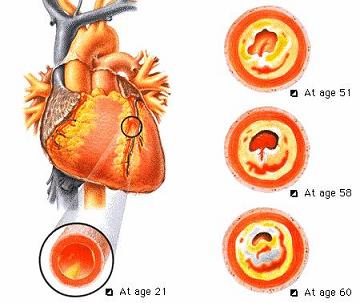The most common heart disorder is coronary artery disease (CAD). The heart needs a constant oxygen supply because it is one of the body's hardest-working muscles. This oxygen is delivered by the coronary arteries, which carry about 5 percent of the blood pumped from the heart directly to the heart muscle. In CAD, these arteries become narrowed, which reduces-or may even stop-their ability to carry oxygen. Insufficient oxygen may reduce the heart's ability to pump and cause pain or damage to the heart muscle.
Causes. Nearly all coronary artery disease results from atherosclerosis. Atherosclerosis is a process in which deposits of fat, calcium, and dead cells form on the inner layers of artery walls. These deposits are called plaques.
Plaques interfere with the smooth flow of blood through arteries. Plaques that grow large enough can narrow an artery and significantly reduce blood flow. In some cases, plaques can block an entire artery and stop blood flow completely. Flow may also stop if a blood clot, called a thrombus, forms in the narrowed artery. Plaques often crack or break, releasing substances that also can lead to blood clots. If a blood clot blocks a coronary artery, it causes a heart attack. A clot that forms in an artery in the brain causes a stroke.
|


